Uneven Brake Pad Wear
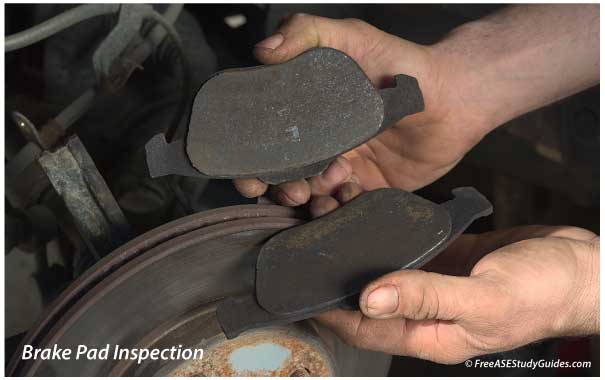
Check brake pad wear after removing the caliper. Sticking calipers, disc thickness variation, and brake pad misalignment result in uneven wear. Check the brake pads for cracks, uneven wear, and misalignment while inspecting each unit. Manufacturers offer specifications for minimum pad thickness.
The most common problem is uneven pad wear on floating brake caliper systems. They have a single piston and two guide pins to control pad movement. The caliper's piston moves the inner brake pad against the rotor, causing it to wear a little more (~2 mm).
If there is a noticeable difference, further inspection is required. Replacing the brake pads without servicing a sticking guide pin or caliper piston will result in the same uneven pad wear.
Sticking Caliper Guide Pins
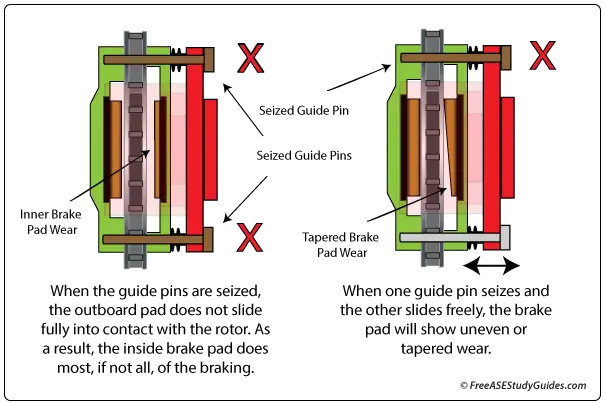
Environmental contamination of the guide or slide pins in floating calipers causes them to stick or seize in their bores, resulting in uneven pad wear. Sticking and seized guide pins result from water and dirt contamination, improper lubricants, and pin boot damage.
Uneven brake pad wear occurs because the inside brake pad does most of the work. The seized guide pin prevents outer pad movement. If one guide sticks or freezes, the inside brake pad is tapered with more wear on the opposite side of the seized pin.
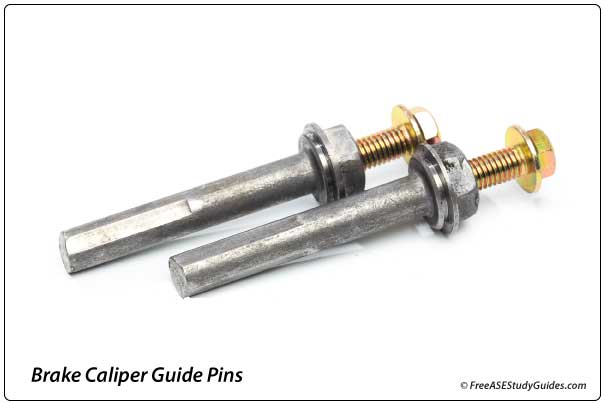
They can be difficult to remove; if the bore and guide are good, they can usually be cleaned and lubricated with the proper synthetic brake lubricant before returning to service. Avoid petroleum lubricants that cause the rubber parts like pin boots and bushings to swell. Sticking brake calipers results in unusual noise, brake drag and pull, and pad wear.
Sticking Caliper Piston
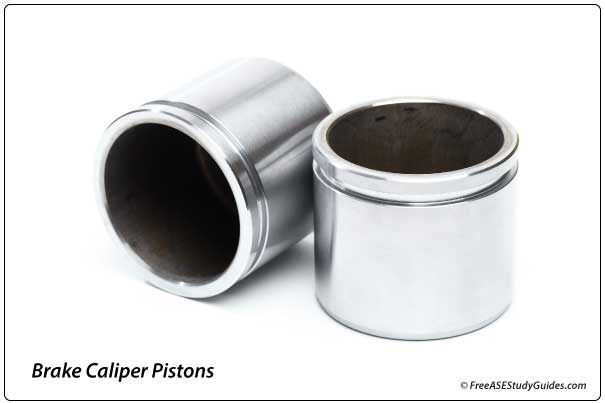
A sticking caliper piston seal may not retract into its bore. As a result, the inner brake pad drags against the brake rotor. A faulty piston seal, residual pressure from a kink in the brake line, or a twisted brake hose can cause inner pad wear.
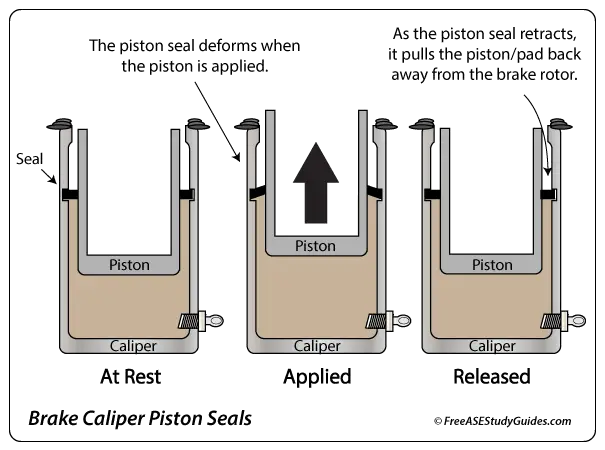
The piston seal retracts the piston to pull the pad away from the rotor when the pedal is released. If the caliper's piston boot leaks and rust forms on the piston or the piston seal fails to retract, the inner pad will drag. Brake drag results in excessive pad wear, overheated rotors, and pull. Check to make sure the wheel spins freely after every brake job.
Brake Pad Misalignment
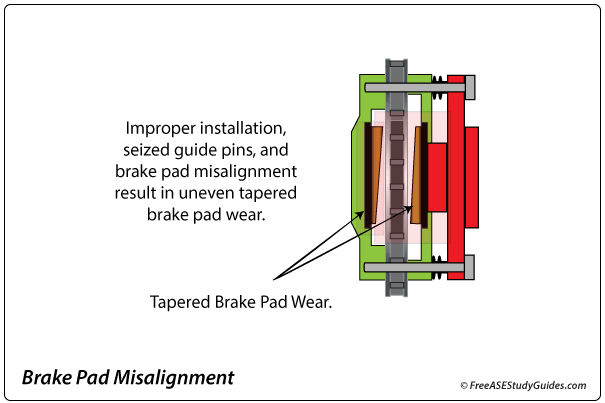
This problem occurs with improper brake pad installation. The caliper and pads must align precisely with the disc rotor, ensuring the entire pad lining contacts the rotor. In addition, the anti-rattle wear clips can rust and wear, resulting in a loose pad or binding. A binding chatter clip can cause the brake pad to stick or drag.
Disc Thickness Variation
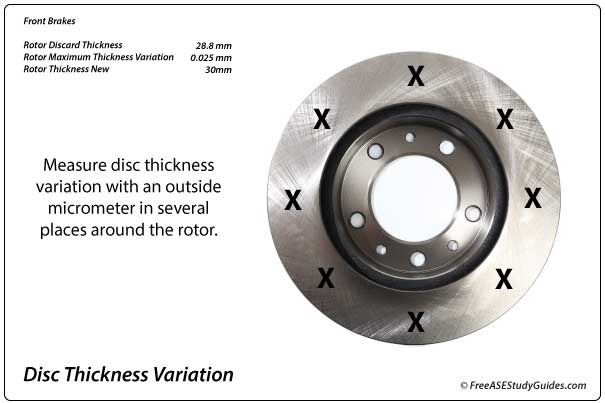
Disc thickness variation wears away at the brake pad's lining, resulting in pad wear and hard pad material called cementite collecting in the distorted rotor's flat spots. Measure disc thickness variation with an outside micrometer in several places around the rotor.
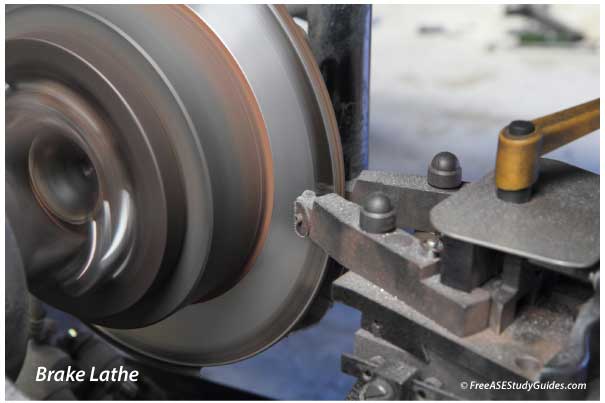
Rotors are replaced in pairs or machined on a brake lathe to correct thickness variation. In addition, manufacturers often recommend bedding in or burnishing the brakes after replacing the brake pads. A single distorted rotor causes one set of brake pads to wear more than the others.